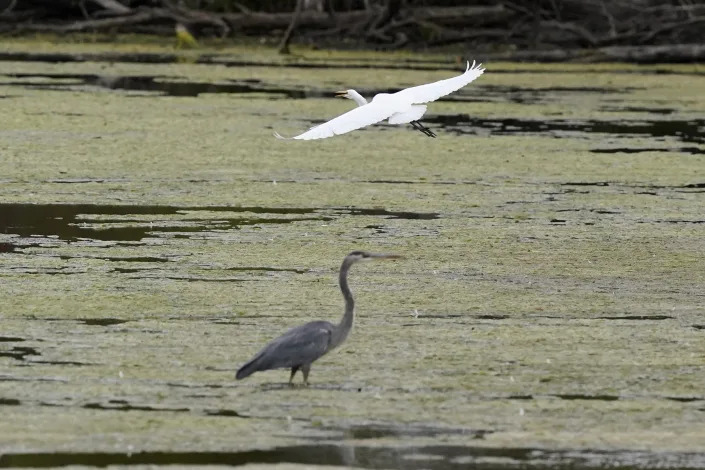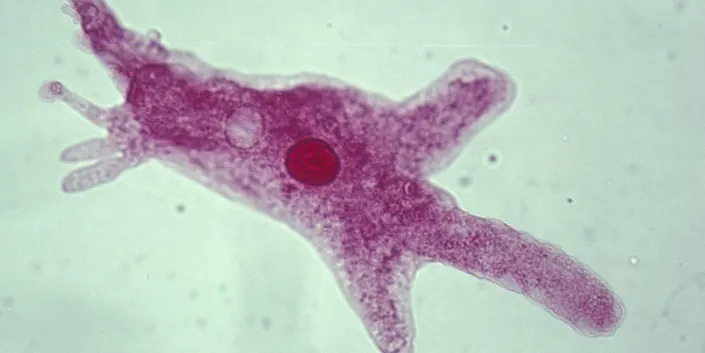Biden administration has called for protecting mature US forests to slow climate change, but it's still allowing them to be logged
William Moomaw, Professor Emeritus of International Environmental Policy, Tufts University Beverly Law, Professor Emeritus of Global Change Biology and Terrestrial Systems Science, Oregon State University
THE CONVERSATION
Thu, March 9, 2023

An old-growth tree that was cut in Alaska's Tongass National Forest. Salwan Georges/The Washington Post via Getty Images
Forests are critically important for slowing climate change. They remove huge quantities of carbon dioxide from the atmosphere – 30% of all fossil fuel emissions annually – and store carbon in trees and soils. Old and mature forests are especially important: They handle droughts, storms and wildfires better than young trees, and they store more carbon.
In a 2022 executive order, President Joe Biden called for conserving mature and old-growth forests on federal lands. Recently Biden protected nearly half of the Tongass National Forest in Alaska from road-building and logging.
The Biden administration is compiling an inventory of mature and old-growth forests on public lands that will support further conservation actions. But at the same time, federal agencies are initiating and implementing numerous logging projects in mature and old forests without accounting for how these projects will affect climate change or forest species.
As scientists who have spent decades studying forest ecosystems and climate change impacts, we find that to effectively slow climate change, it is essential to increase carbon storage in these forests, not reduce it. A first step toward this goal would be to halt logging federal forests with relatively high-biomass carbon per acre until the Biden administration develops a plan for conserving them.
Balancing timber and climate change
Many of the 640 million acres that the federal government owns and manages are used for multiple purposes, including protecting biodiversity and water quality, recreation, mining, grazing and logging. Sometimes these uses conflict with one another.
Legal mandates to manage land for multiple uses do not explicitly mention climate change, and federal agencies have not consistently factored climate change science into their plans. However, at the beginning of 2023, the White House Council on Environmental Quality directed federal agencies to consider the effects of climate change when they propose major federal actions that significantly affect the environment.
Some logging projects fall into this category. But many large logging projects that affect thousands of acres have been legally exempted from such analysis.
What’s lost when old trees are cut
Most forests in the continental U.S. have been harvested multiple times. Today, fewer than 5% of these forests are more than 100 years old. Old, very large trees are the ones that hold the most carbon, and harvesting forests is the main driver of forest carbon loss.
For example, in Oregon’s national forests east of the Cascades crest, a 1990s policy formerly spared trees larger than 21 inches in diameter – but the rule was rolled back in 2021 so that large trees could be cut. A recent analysis found that these larger trees comprised just 3% of all trees in the six national forests, but accounted for 42% of living tree carbon.
In the Green Mountain National Forest in Vermont, federal officials have approved 40,000 acres of harvest since 2016, targeting many mature and old trees. One 14,270-acre area that was approved for harvest in 2019 contained more than 130 stands older than 100 years. This project required the construction of 25 miles of logging roads, which can have harmful effects, including fragmenting forests, polluting streams and making forests more vulnerable to human-caused wildfires.
Canada is also allowing large, mature trees to be harvested. In British Columbia, mature forests that include old-growth trees historically absorbed more carbon than they released to the atmosphere, resulting in a net carbon sink annually. But since 2002, these tracts have emitted more carbon than they removed from the atmosphere, primarily because of logging, beetle attacks and wildfires. According to British Columbia’s greenhouse gas emissions inventory, these forests now emit more carbon than the province’s energy sector.
In eastern Canada, the Pacific Northwest and the southeastern U.S., timber companies have removed many old trees and replaced them with plantations that contain just one or two tree species. This shift has reduced the structural diversity of the forest canopy – the ecologically important layer formed by the crowns of trees – and the diversity of tree species. Losing old-forest habitat has also caused broad-scale population declines among many forest bird species in eastern Canada, and is likely having the same effect in the U.S.
More harvesting releases more carbon
One argument forest product companies make to support logging is that wood can be regrown, and it releases less carbon dioxide to the atmosphere than other building materials. Such claims often make optimistic assumptions that overstate the carbon benefits of harvesting trees by factors of 2 to 100.
Some studies indicate that thinning forests by harvesting some trees and reintroducing low-intensity fires can reduce the intensity of future wildfires, leaving more carbon stored in trees. But these studies don’t account for the large amount of carbon that is released to the atmosphere after trees are cut.
In a review published in 2019, we worked with colleagues to estimate how much carbon was contained in trees that were harvested in Washington, Oregon and California from 1900 through 2015, and what happened to it after the trees were logged. We calculated that just 19% of the harvested carbon was in long-lived wood products like timber in buildings. Another 16% was in landfills, and the remaining 65% was released into the atmosphere as carbon dioxide.
In contrast, in 2011 the Australian state of Tasmania suspended logging on half of its old-growth forest area. Within less than a decade, Tasmania was storing more carbon than it released because it was avoiding harvest emissions and the mature trees it saved were accumulating so much carbon.
In the U.S. Pacific Northwest, implementation of the 1994 Northwest Forest Plan, which the Clinton administration developed to protect endangered species in old-growth forests on public lands, significantly increased carbon storage over the next 17 years. In contrast, privately managed lands in the region accumulated virtually no additional carbon after accounting for losses from wildfire and harvesting.

A logging truck in the Pacific Northwest in 1954. Since 1600, 90% of the original forests in what is now the U.S. have been logged. Universal History Archive via Getty Images
The cheapest and simplest way to capture carbon
President Biden has set a goal of reducing U.S. greenhouse gas emissions to net-zero by 2050 to avoid catastrophic climate change. To reach that goal, U.S. forests, lands and oceans will have to remove as much carbon dioxide from the atmosphere as the nation emits from fossil fuels, industry and agriculture.
In the western U.S., our research shows that protecting half of the mature carbon-dense forests in zones that are relatively less vulnerable to drought and fire could triple carbon stocks and accumulation on protected forests by 2050. A majority of these forests are on public lands.
The carbon dioxide that human activities are releasing into the atmosphere today will elevate global temperatures and raise sea levels for 1,000 years or more, unless societies can find ways to remove it. In its 2022 climate assessment report, the Intergovernmental Panel on Climate Change concluded that protecting existing natural forests was “the highest priority for reducing greenhouse gas emissions.”
Conserving forests is one of the lowest-cost options for managing carbon dioxide emissions, and it doesn’t require expensive or complex energy-consuming technologies. In our view, sufficient science exists to justify a moratorium on harvesting mature trees on federal lands so that these forests can keep performing their invaluable work.
This article is republished from The Conversation, an independent nonprofit news site dedicated to sharing ideas from academic experts.
It was written by: Beverly Law, Oregon State University and William Moomaw, Tufts University.
Read more:
Restoring California’s forests to reduce wildfire risks will take time, billions of dollars and a broad commitment
A volcanic eruption 39 million years ago buried a forest in Peru – now the petrified trees are revealing South America’s primeval history
William Moomaw receives funding from the Rockefeller Brothers Fund. He is affiliated with the Woodwell Climate Research Center and the Union of Concerned Scientists. Moomaw has been a lead author of five major Intergovernmental Panel on Climate Change (IPCC) reports.
Beverly Law does not work for, consult, own shares in or receive funding from any company or organization that would benefit from this article, and has disclosed no relevant affiliations beyond their academic appointment.

















